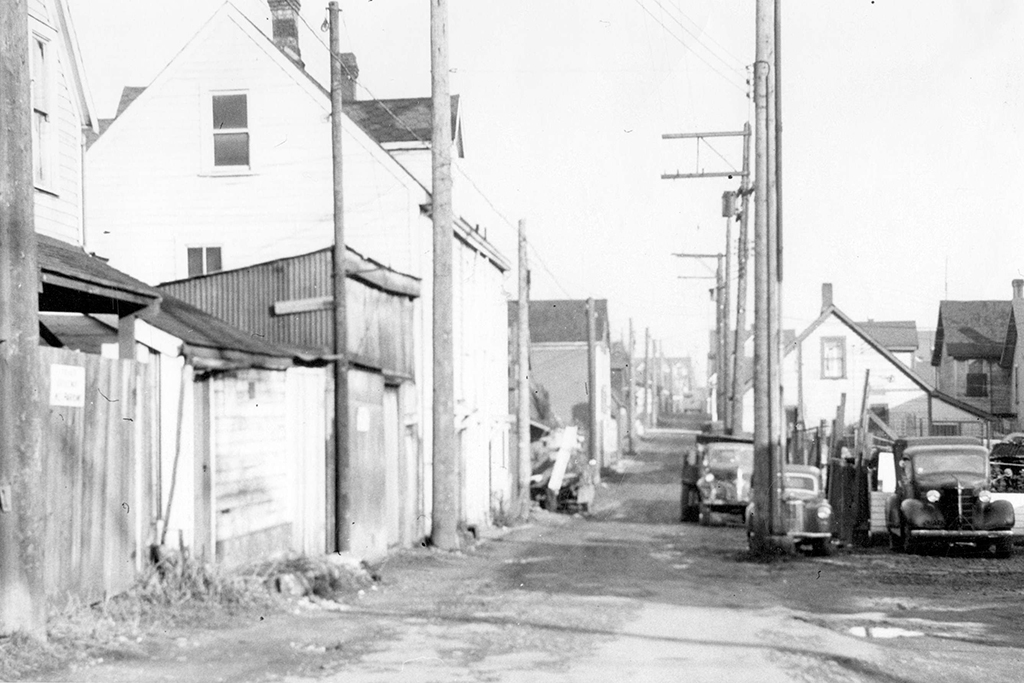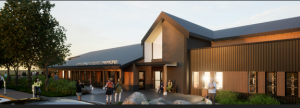A key part of Black Vancouver history is finally receiving recognition and a chance for renewal.
Vancouver City Council has approved a memorandum of understanding (MOU) with the Hogan’s Alley Society to deliver housing, public benefits and amenities on the 898 Main St. block, formerly known as Hogan’s Alley.
The area is known historically as the centre of Black and African diaspora communities in Vancouver extending back into the 1800s.
The neighbourhood was near railroads where many Black men worked and a Black church and small businesses were part of the area.
Urban renewal initiatives in the 1950s and ‘60s by the City of Vancouver displaced Hogan’s Alley residents resulting in construction of the Dunsmuir and Georgia viaducts as part of an eventually abandoned effort to bring freeways to the city’s downtown core.
The MOU “recognizes and begins to address the harm the city caused through a series of actions and policies over multiple decades that displaced the Black and African Diaspora communities, culminating with the removal of all buildings to enable the construction of the viaducts in 1972. This essentially led to the erasure of the Black community from the area,” the City of Vancouver stated.
“There have been a variety of folks primarily led by the Hogan’s Alley Society that have been advocating to the municipal government for a number of years, first of all to acknowledge the presence of that community and the impact of that displacement, and then essentially calling for some redress for the impact of that displacement for that community,” said Hogan’s Alley Society executive director Djaka Blais.
Hogan’s Alley Society board member Stephanie Allen explained the agreement is “essentially a not-for-profit real estate development model, which is quite prevalent across the country. The way that it works is that the City of Vancouver will offer up a long-term lease on city owned land, which is really the site where they displaced the Black community under urban renewal in the 1950s and 1960s.
“Through that long-term lease, which obviously has the same value as a fee simple interest ownership, we can leverage that working with federal and provincial governments on affordable housing initiatives, as well as the private sector supply chain to deliver below-market and market rental housing, along with commercial space. It’s your typical downtown urban mixed-use development.”
The Hogan’s Alley MOU is also aligned with the city’s Northeast False Creek Plan (NEFC) which intends to replace the current Georgia and Dunsmuir viaducts with a new community in downtown Vancouver.
The City of Vancouver stated it “lays the foundation to deliver significant public benefits and amenities on the block including affordable housing, a cultural centre, child care, artist production space and public art.”
Allen said the cultural centre is in the early planning stages and that it’s important that it complement other Vancouver community spaces.
“We want to make sure that this is a 24-7 utilized space and that the economic model also makes sense to the cultural model,” she said.
“We’ve been inspired by places like the National Museum for African-American History and Culture in Washington, D.C. and inspired by real showstopper pieces of cultural infrastructure. We’d love for that to be the case for this place as well, recognizing that it will serve local, regional, provincial and national audiences.”
Next steps, Blais said, include negotiating the long-term lease with the City of Vancouver as the city gets funding in place in order to demolish the viaducts.
“More immediate next steps are actually connecting and building strong relationships with First Nations communities in recognition that this is their unceded territory, getting their guidance on this work moving forward, as well as engaging with the Black community and broader Vancouver and Metro Vancouver community in informing the development,” she said.
“I think this is a really amazing opportunity for the entire supply chain, (such as) general contractors, architects, engineers,” Allen added. “They’re always looking for ways to get more involved in community, and sometimes there’s ways that they can give back and participate.
“Being a part of a project likes this will really be something that can bring some inspiration to our work in this sector and give people something that is quite monumental in its redressing of historical wrongs while envisioning a more inclusive society for everyone.”
Follow the author on Twitter @JOCFrey.











Recent Comments